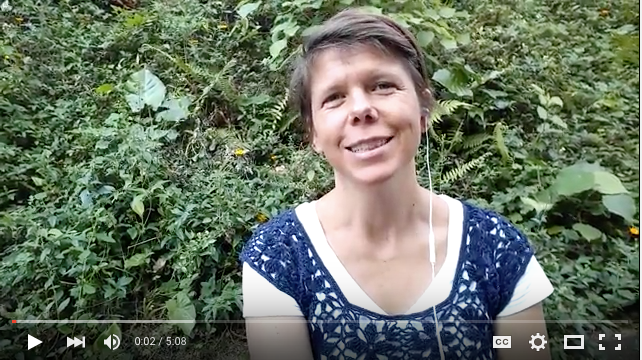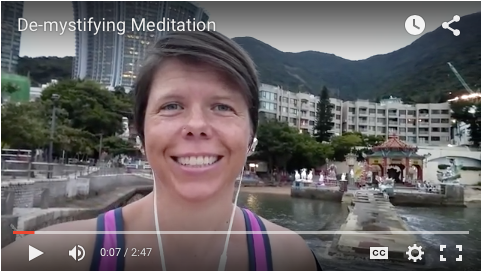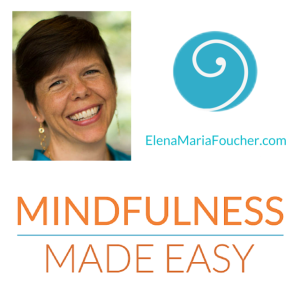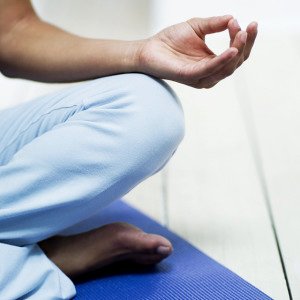
 I’m standing here meditating because I know it helps me get calm and clear… and my mind is racing.
I’m standing here meditating because I know it helps me get calm and clear… and my mind is racing.
Thoughts and feelings are flying through…
…and, sure enough, here they come, the judgments…
“I can’t believe I’m thinking about missing my appointment yesterday while I’m meditating! This is terrible! I really don’t like feeling this guilt. I wish I would stop feeling like this! I shouldn’t be thinking these awful thoughts. I should be focusing on my breath. Will this ever stop?! This is terrible! I can’t do this!”
We’ve all had this happen!
We’re meditating and we have heard that this will clear our minds of thought. When find ourselves thinking instead, we think, this has got to be bad, right? Clearly, we must be doing it wrong if we’re thinking?
Well, sort of.
The issue here is that if we think that we shouldn’t be thinking then we’re generating MORE thoughts. If we think that we shouldn’t be thinking… then, guess what? We’re thinking! We’re actually adding more thoughts in the mix. If we add anger, guilt or disapproval we feel bad as well. This is the polar opposite of calm and clear. We begin to doubt that we can meditate at all or that it is useful to do.
What’s the secret to getting out of this trap?
The secret is to be kind to yourself.
You’re mind is going to think. That’s it’s job. It’s good at it, and this is a good thing! Enjoy it. Appreciate it. It works hard serving you everything you ask of it.
The thing to realize is that you’re asking it for something new. You’re asking it to slow down and get quiet. It can do that. It will just take some time, some practice. Working with your mind will get you there a lot faster than working against it.
Your mind will naturally quiet if you’re kind to it and allow it to do it’s job with out needing it to be another way right now. If you recognize that it thinks a lot and start from there. If you’re ok with what is true right now and work with that. If you don’t fight it and you’re okay with it, then you allow it to change.
The trick is to keep both things in mind: that you’re intentio n is to be quiet AND that you’re okay with whatever is happening right now (quiet or not)
n is to be quiet AND that you’re okay with whatever is happening right now (quiet or not)
.
Kindness works because as we move towards something, as we accept it, it gives what ever it is the support it needs to change. If we do the opposite, if we deny something and disapprove of it then we don’t give it the support it needs to change. It’s left there hanging, with out any help to do anything different. If I help you change then you will change a lot faster than if I just get mad at you for not changing.
I’m not saying that you have to approve of your thoughts, or feel good about what you’re thinking. I am saying that your mind will be quiet faster if instead of getting upset and demanding that it do something that it isn’t doing, you accept what it is doing and start from there. You can’t lead someone out of a place if you don’t first go to where to they are, take their hand, and guide them out. If you stand somewhere else and get mad at them for being where they are, chances are neither of you is going to go very far, very fast.
Here is a simple formula you can use when you practice:
1. Have the intention of focusing your mind on your practice (on your breath, your body, etc.).
2. Have the intention of being okay (kind) when your mind thinks about everything else instead.
3. Build trust in your practice by noticing after you practice wether you’re calmer and clearer. Don’t monitor how well you’re doing during your practice (which creates more thinking!). Take a moment at the end of your practice to notice how you feel.
Be patient with yourself.
Know that you will get better and better and better at all of this over time.
Remember that you can be kind to yourself when you’re having a tough time being kind. If nothing else, you’re practicing being kind to yourself, which is a pretty cool practice in itself. It feels a lot better than disapproval and like most things with meditation, it tends to overflow into all of the other parts of your life which awesome.
Enjoy,
Elena







 n is to be quiet AND that you’re okay with whatever is happening right now (quiet or not)
n is to be quiet AND that you’re okay with whatever is happening right now (quiet or not)





